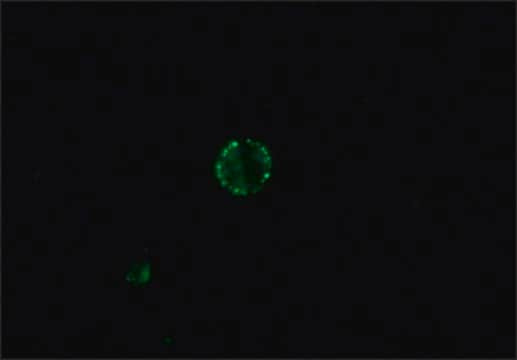C6594
Anti-c-Myc
clone 9E10, purified immunoglobulin, buffered aqueous solution
Sinónimos:
Anti-c-Myc
About This Item
Productos recomendados
biological source
mouse
conjugate
CY3 conjugate
antibody form
purified immunoglobulin
antibody product type
primary antibodies
clone
9E10, monoclonal
form
buffered aqueous solution
species reactivity
human
technique(s)
direct immunofluorescence: 1:50 using formalin-fixed, paraffin-embedded human colon carcinoma tissue
UniProt accession no.
shipped in
wet ice
storage temp.
2-8°C
target post-translational modification
unmodified
Gene Information
human ... MYC(4609)
¿Está buscando productos similares? Visita Guía de comparación de productos
General description
Immunogen
Application
- western blotting
- immunocytochemistry
- Immunofluorescence
Biochem/physiol Actions
Physical form
Legal Information
Disclaimer
Not finding the right product?
Try our Herramienta de selección de productos.
Storage Class
10 - Combustible liquids
wgk_germany
nwg
flash_point_f
Not applicable
flash_point_c
Not applicable
ppe
Eyeshields, Gloves, multi-purpose combination respirator cartridge (US)
Certificados de análisis (COA)
Busque Certificados de análisis (COA) introduciendo el número de lote del producto. Los números de lote se encuentran en la etiqueta del producto después de las palabras «Lot» o «Batch»
¿Ya tiene este producto?
Encuentre la documentación para los productos que ha comprado recientemente en la Biblioteca de documentos.
Nuestro equipo de científicos tiene experiencia en todas las áreas de investigación: Ciencias de la vida, Ciencia de los materiales, Síntesis química, Cromatografía, Analítica y muchas otras.
Póngase en contacto con el Servicio técnico








